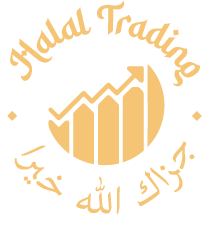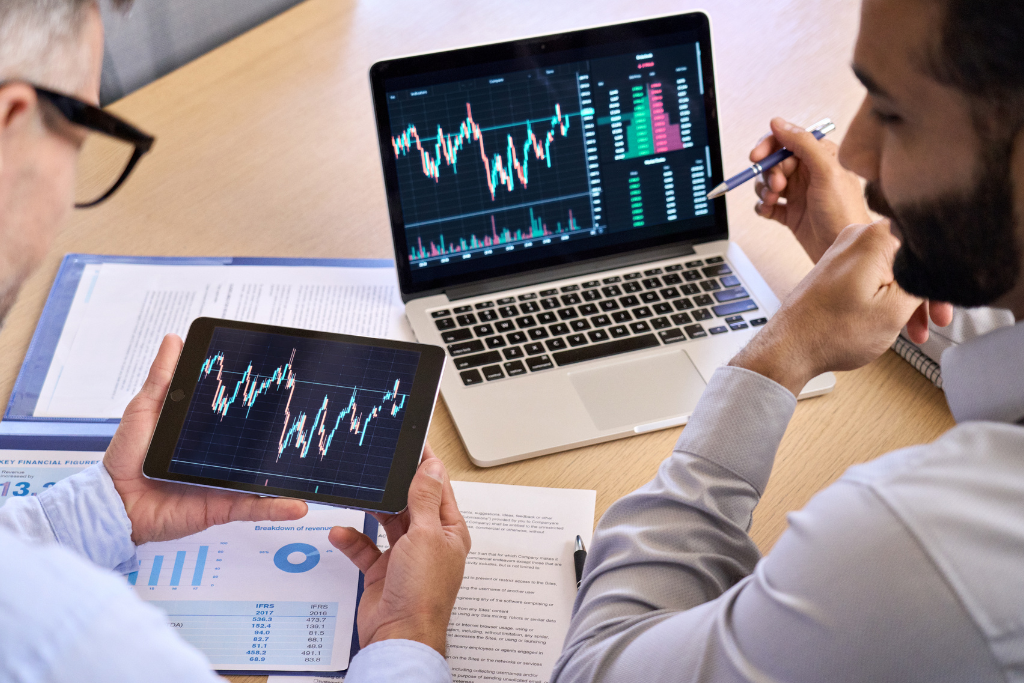Forex trading has gained immense popularity in recent years, attracting traders of all levels from around the world. It is a decentralized global market for trading currencies, where participants buy or sell one currency for another. Despite its popularity, many individuals still struggle to understand the basics of Forex trading, including the role of brokers, bid and ask prices, and execution methods. In this article, we will delve deeper into how Forex trading works, outlining the key components that make up the market. We will explore the role of brokers, explain how bid and ask prices work and examine different execution methods. By the end of this article, you will have a fundamental understanding of Forex trading and the tools you need to confidently participate in the market.
1. Introduction to Forex Trading
What is Forex Trading?
Forex trading, or foreign exchange trading, is the act of buying and selling currencies from across the world with the intention of making a profit. It is the largest financial market globally, with an average daily trading volume of $6.6 trillion. The Forex market is decentralized, meaning it has no central exchange and operates 24 hours a day, five days a week.
History of Forex Trading
Forex trading originated in ancient times when traders exchanged goods and currencies to facilitate international trade. However, the modern Forex market began in the 1970s when countries decided to float their currencies on the international market, leading to the birth of the currency exchange market we know today.
2. The Role of Brokers in Forex Trading
What are Forex Brokers?
Forex brokers are firms that provide traders with access to the Forex market by buying and selling currencies on their behalf. They offer trading platforms, tools, education, research, and analysis to help traders make informed decisions.
Types of Forex Brokers
There are two types of Forex brokers: Market Makers and Electronic Communications Networks (ECNs). Market Makers provide liquidity to their clients by taking the opposite side of their positions. ECNs, on the other hand, connect traders directly to other traders and liquidity providers, resulting in tighter spreads and faster execution.
Choosing a Forex Broker
Choosing the right Forex broker is crucial to successful trading. Factors to consider when choosing a broker include their regulatory status, trading platform, fees and commissions, customer support, and research and analysis tools.
3. Understanding Bid and Ask Prices
Definition of Bid and Ask Prices
Bid and ask prices refer to the highest price a buyer is willing to pay for a currency and the lowest price a seller is willing to accept, respectively. The difference between the bid and ask price is known as the spread.
How to Read Bid and Ask Prices
Bid and ask prices are usually displayed as two numbers separated by a slash. The first number is the bid price, and the second number is the ask price. For example, EUR/USD 1.2000/1.2005 means that the bid price for the Euro is 1.2000 US dollars, and the ask price is 1.2005 US dollars.
Factors Affecting Bid and Ask Prices
Bid and ask prices are influenced by several factors, including supply and demand, economic and political events, interest rates, and central bank policies.
4. Execution Methods in Forex Trading
What are Execution Methods?
Execution methods in Forex trading refer to how traders enter and exit trades. The three most common execution methods are market orders, limit orders, and stop orders.
Market Orders
A market order is an instruction to buy or sell a currency at the best available price in the market. Market orders are executed instantly but may be filled at a price different from the one requested by the trader.
Limit Orders
A limit order is an instruction to buy or sell a currency at a specific price or better. If the market reaches the specified price, the order is executed at the requested price or better.
Stop Orders
A stop order is an instruction to buy or sell a currency when it reaches a specific price called the stop-loss. Stop orders are used to limit losses or lock in profits in case the market moves against the trader’s position.
5. Market Orders in Forex Trading
What are Market Orders?
In forex trading, a market order is an instruction to buy or sell a currency pair at the best available price in the market. It is executed immediately and is the simplest and quickest way to enter or exit a trade.
How to Place a Market Order
Placing a market order is easy. Once you have selected the currency pair you want to trade, you can simply enter the amount you want to buy or sell and click the “buy” or “sell” button depending on whether you think the price will go up or down.
Advantages and Disadvantages of Market Orders
Market orders have the advantage of being executed quickly and at the best available price. They are great for traders who need to enter or exit a trade quickly to take advantage of market movements. However, one disadvantage is that the price at which the market order is executed may not be the exact price that the trader desired, especially in volatile market conditions.
6. Limit Orders in Forex Trading
What are Limit Orders?
Limit orders are instructions to buy or sell a currency pair at a specific price or better. The order is only executed once the currency pair hits the specified price level.
How to Place a Limit Order
To place a limit order, traders must select the currency pair they want to trade, specify the amount they wish to buy or sell, and set the limit price at which they want the order to be executed. Once the price hits this level, the order is executed automatically.
Advantages and Disadvantages of Limit Orders
Limit orders give traders more control over the price they pay or receive for a currency pair. They are ideal for traders who want to enter or exit a trade at a specific price level or for those who want to take advantage of potential price movements. However, one disadvantage is that if the price does not reach the specified level, the trade may not be executed.
7. Forex Trading Strategies
Technical Analysis
Technical analysis is a popular trading strategy that involves using charts and indicators to identify potential price movements. Traders who use technical analysis believe that past price movements can predict future price movements.
Fundamental Analysis
Fundamental analysis involves analyzing economic and political events that may impact the market to predict currency movements. Traders who use fundamental analysis examine factors such as interest rates, inflation, and government policies to determine the direction of the market.
Price Action Trading
Price action trading involves analyzing the movement of the price of a currency pair without using indicators or other technical analysis tools. Traders who use price action trading believe that the price movement itself contains all the necessary information about the market.
8. Conclusion: The Importance of Education in Forex Trading
Benefits of Forex Trading Education
Forex trading education is essential for traders who want to succeed in the market. It helps traders to develop a deep understanding of the market, trading strategies, and risk management. Education can also help traders to improve their trading skills and make better-informed decisions.
Risks of Trading Forex Without Education
Trading forex without education can be risky. Traders who do not have adequate knowledge of the market may make impulsive decisions that can lead to losses. Lack of education can also lead to poor risk management, which could result in larger losses than expected. Therefore, it is crucial to invest in forex trading education before entering the market.In conclusion, Forex trading can be a lucrative and exciting venture for those who take the time to understand the market. By educating yourself on the role of brokers, bid and ask prices, and execution methods, you can make informed decisions and increase your chances of success. With the right strategy and discipline, Forex trading can offer a unique opportunity for financial growth and personal development. Remember to always stay informed and never stop learning about this dynamic market.
FAQ
What is Forex Trading?
Forex trading is the exchange of one currency for another in the global foreign exchange market. It is a decentralized market that operates 24 hours a day, five days a week. Participants buy and sell currencies with the goal of making a profit from currency price fluctuations.
Do I Need a Broker to Trade Forex?
Yes. Forex trading requires a broker who can provide trading platforms and execute trades on your behalf. It is important to choose a reputable broker who is regulated by a recognized authority to ensure the safety of your investments.
What is the Difference Between a Market Order and a Limit Order?
A market order is an order to buy or sell a currency at the current market price. This type of order is executed immediately at the best available price. A limit order, on the other hand, is an order to buy or sell a currency at a specified price or better. This type of order is executed only when the market reaches the specified price.
What are Some Common Forex Trading Strategies?
There are several common Forex trading strategies, including technical analysis, fundamental analysis, and price action trading. Technical analysis involves analyzing charts and using indicators to identify patterns and trends. Fundamental analysis involves analyzing economic and political events to predict currency movements. Price action trading involves analyzing price movements and using price patterns to make trading decisions.




